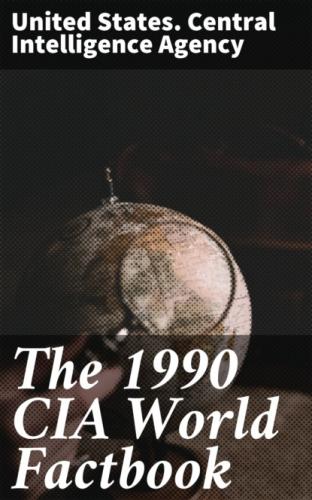- Economy Overview: The economy, a mixture of private enterprises of all sizes and extensive government intervention, experienced enormous difficulties in the late 1980s, notably declining real growth, runaway inflation, foreign debt obligations of more than $100 billion, and uncertain economic policy. Government intervention includes trade and investment restrictions, wage/price controls, interest and exchange rate controls, and extensive tariff barriers. Ownership of major industrial facilities is divided among private interests, the government, and multinational companies. Ownership in agriculture likewise is varied, with the government intervening in the politically sensitive issues involving large landowners and the masses of poor peasants. In consultation with the IMF, the Brazilian Government has initiated several programs over the last few years to ameliorate the stagnation and foreign debt problems. None of these has given more than temporary relief. The strategy of the new Collor government is to increase the pace of privatization, encourage foreign trade and investment, and establish a more realistic exchange rate. One long-run strength is the existence of vast natural resources.
GDP: $377 billion, per capita $2,500; real growth rate 3% (1989 est.)
Inflation rate (consumer prices): 1,765% (1989)
Unemployment rate: 2.5% (December 1989)
Budget: revenues $27.8 billion; expenditures $40.1 billion, including capital expenditures of $8.8 billion (1986)
Exports: $34.2 billion (1989 est.); commodities—coffee, metallurgical products, chemical products, foodstuffs, iron ore, automobiles and parts; partners—US 28%, EC 26%, Latin America 11%, Japan 6% (1987)
Imports: $18.0 billion (1989 est.); commodities—crude oil, capital goods, chemical products, foodstuffs, coal; partners—Middle East and Africa 24%, EC 22%, US 21%, Latin America 12%, Japan 6% (1987)
External debt: $109 billion (December 1989)
Industrial production: growth rate 3.2% (1989 est.)
Electricity: 52,865,000 kW capacity; 202,280 million kWh produced, 1,340 kWh per capita (1989)
Industries: textiles and other consumer goods, shoes, chemicals, cement, lumber, iron ore, steel, motor vehicles and auto parts, metalworking, capital goods, tin
Agriculture: accounts for 12% of GDP; world's largest producer and exporter of coffee and orange juice concentrate and second-largest exporter of soybeans; other products—rice, corn, sugarcane, cocoa, beef; self-sufficient in food, except for wheat
Illicit drugs: illicit producer of cannabis and coca, mostly for domestic consumption; government has an active eradication program to control cannabis and coca cultivation
Aid: US commitments, including Ex-Im (FY70–88), $2.5 billion; Western (non-US) countries, ODA and OOF bilateral commitments (1970–87), $9.5 billion; OPEC bilateral aid (1979–89), $284 million; Communist countries (1970–88), $1.3 billion
Currency: novo cruzado (plural—novos cruzados); 1 novo cruzado (NCr$) = 100 centavos
Exchange rates: novos cruzados (NCr$) per US$1—2.83392 (1989), 0.26238 (1988), 0.03923 (1987), 0.01366 (1986), 0.00620 (1985); note—25 tourist/parallel rate (December 1989)
Fiscal year: calendar year
- Communications Railroads: 29,694 km total; 25,268 km 1.000-meter gauge, 4,339 km 1.600-meter gauge, 74 km mixed 1.600–1.000-meter gauge, 13 km 0.760-meter gauge; 2,308 km electrified
Highways: 1,448,000 km total; 48,000 km paved, 1,400,000 km gravel or earth
Inland waterways: 50,000 km navigable
Pipelines: crude oil, 2,000 km; refined products, 3,804 km; natural gas, 1,095 km
Ports: Belem, Fortaleza, Ilheus, Manaus, Paranagua, Porto Alegre,
Recife, Rio de Janeiro, Rio Grande, Salvador, Santos
Merchant marine: 271 ships (1,000 GRT or over) totaling 5,855,708 GRT/9,909,097 DWT; includes 2 passenger-cargo, 68 cargo, 1 refrigerated cargo, 12 container, 9 roll-on/roll-off, 56 petroleum, oils, and lubricants (POL) tanker, 15 chemical tanker, 10 liquefied gas, 14 combination ore/oil, 82 bulk, 2 combination bulk
Civil air: 176 major transport aircraft
Airports: 3,774 total, 3,106 usable; 386 with permanent-surface runways; 2 with runways over 3,659 m; 21 with runways 2,240–3,659 m; 503 with runways 1,220–2,439 m
Telecommunications: good system; extensive radio relay facilities; 9.86 million telephones; stations—1,223 AM, no FM, 112 TV, 151 shortwave; 3 coaxial submarine cables 3 Atlantic Ocean INTELSAT earth stations with total of 3 antennas; 64 domestic satellite stations
- Defense Forces
Branches: Brazilian Army, Navy of Brazil, Brazilian Air Force
Military manpower: males 15–49, 39,620,936; 26,752,307 fit for military service; 1,617,378 reach military age (18) annually
Defense expenditures: 0.6% of GDP, or $2.3 billion (1989 est.)—————————————————————————— Country: British Indian Ocean Territory (dependent territory of the UK) - Geography Total area: 60 km2; land area: 60 km2
Comparative area: about 0.3 times the size of Washington, DC
Land boundaries: none
Coastline: 698 km
Maritime claims:
Territorial sea: 3 nm
Disputes: Diego Garcia is claimed by Mauritius
Climate: tropical marine; hot, humid, moderated by trade winds
Terrain: flat and low (up to 4 meters in elevation)
Natural resources: coconuts, fish
Land use: 0% arable land; 0% permanent crops; 0% meadows and pastures; 0% forest and woodland; 100% other
Environment: archipelago of 2,300 islands
Note: Diego Garcia, largest and southernmost island, occupies strategic location in central Indian Ocean
- People Population: no permanent civilian population; formerly about 3,000 islanders
Ethnic divisions: civilian inhabitants, known as the Ilois, evacuated to
Mauritius before construction of UK and US defense facilities
- Government Long-form name: British Indian Ocean Territory (no short-form name); abbreviated BIOT
Type: dependent territory of the UK
Capital: none
Leaders:
Chief of State—Queen ELIZABETH II (since 6 February 1952);
Head of Government—Commissioner R. EDIS (since NA 1988), Administrator Robin CROMPTON (since NA 1988); note—both officials reside in the UK
Diplomatic representation: none (dependent territory of the UK)
Flag: the flag of the UK is used
- Economy Overview: All economic activity is concentrated on the largest island of Diego Garcia, where joint UK-US defense facilities are located. Construction projects and various services needed to support the military installations are done by military and contract employees from the UK and US. There are no industrial or agricultural activities on the islands.
Electricity: provided by the US military
- Communications
Highways: short stretch of paved road between port and airfield on
Diego Garcia
Ports: Diego Garcia
Airports: 1 with permanent-surface runways over 3,659 m on Diego Garcia
Telecommunications: minimal facilities; stations (operated by the
US Navy)—1 AM, 1 FM, 1 TV; 1 Atlantic Ocean
